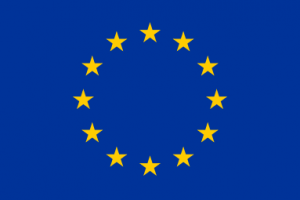The first action, led by KTU, concerned the cross-national quantitative and qualitative surveys among institutional stakeholders about the limits and potential of the current organization of knowledge in disciplines. Together with this, UNIBO established a study group in charge of investigating, through intensive meetings, inter/multi/transdisciplinary forms of knowledge organization and multi-actor contexts of knowledge construction. These two actions contributed to the production of the report “FR1- Framework for aligning science teaching/learning in formal contexts with R&I: new inter-multi-transdisciplinary forms of knowledge organization for co-teaching and open-schooling”.
The objectives of WP1 were:
The deliverables under this Work Package are the following:
WP2 detected, sampled and analysed examples of contamination and cross intersection of narratives about science and on science that use a variety of languages, storytelling formats, registers and tools mutuated from the arts, music, photography, cinema and TV shows, graphic and written novels, fantasy and science fiction, design, theatre. This to achieve a common understanding of these alternatives, innovative, artistic and non traditional languages and narratives within the consortium; WP2 realized intensive workshops that will bring together a diverse group of professionals - multimedia producers, graphic designers, writers, sound designers, educators, comedians. By applying design-driven methodologies, these groups of storytellers used their languages, formats and approaches to analyse key-ideas of FEDORA and produced some raw prototypes of educational resources encompassing diverse formats and languages. This action produced the report “FR2 - Framework for aligning science education with society: the search for new languages and narratives to enhance imagination and the capacity to talk about the contemporary challenges.
The objectives of WP2 were:
The first action, led by Teach The Future (TTF), concerned desk research to recognize if and how future is part of science education. The second action, led by UH, aimed at reaching an in-depth understanding of European 11-19 years old students’ perception of future. This empirical investigation sought to build a more nuanced image of some of the premises of the project: young people’s lack of temporal framework and a frantic present. These two main actions and the careful analysis and comparison of their results lead to the production of the “Future-oriented science education manifesto”and the “FR3 - Framework to futurize science education”.
The objectives of WP3 were:
The deliverables under this Work Package are the following:
The first action, led by University of Helsinki concerned the development, implementation and revision of innovative teaching activities and materials aimed to develop inter-multi-transdisciplinary, linguistic/argumentative, imaginative thinking and future-scaffolding skills, to impact on young people engagement with future-oriented and science-related activities. The elaboration of the research-based “Model for science education for the society of acceleration and uncertainty” had the form of guidelines articulated in three main sections:
(a) theoretical and pedagogical framework of the approach to science education;
(b) list of design and implementation principles aimed to operationalize the theoretical and pedagogical approaches into practical recommendations;
(c) case studies or examples taken from the implementations. The Model will be progressively fleshed out from the two rounds of implementation. WP4 is organized along three main stages, in accordance with the iterative nature of Design-Based Research methodology: materials’ design, first round implementation, phenomenological analysis of the outcomes, re- design, second round implementation and, again, fine-grained analysis of the outcomes.
The objectives of WP4 were:
The first action, led by University of Oxford, generated recommendations for producing policy briefs. WP5 extensively used a Delphi methodology throughout its tasks to assess policy makers’ attitudes and arrived at a general consensus based on their understanding of needs in light of the input about the findings from WP1 to WP4. The recommendations will be further discussed with the RRI community through interviews and research and education institutions representatives in the dissemination activities in WP6. The second action, led by Kaunas University of Technology, concerned the analysis of the RRI frameworks and aimed at revising the MoRRI indicators.
The objectives of WP5 were:
Communication was key for the FEDORA development, implementation and dissemination, therefore WP6 was transversal and crucial and had to take place from the beginning of the project until the very end. Networking strategies and interchange with other relevant projects and experiences in fields of research as well as of informal and formal science communication contributed to enrich FEDORA communication and to make it more relevant.
The objectives of WP6 were:
The deliverables under this Work Package are the following:
The overall management plan designed by FEDORA aimed at achieving seven main objectives. The project coordination was in the hands of Prof. Olivia Levrini, carried out with the assistance of the Project Manager.
